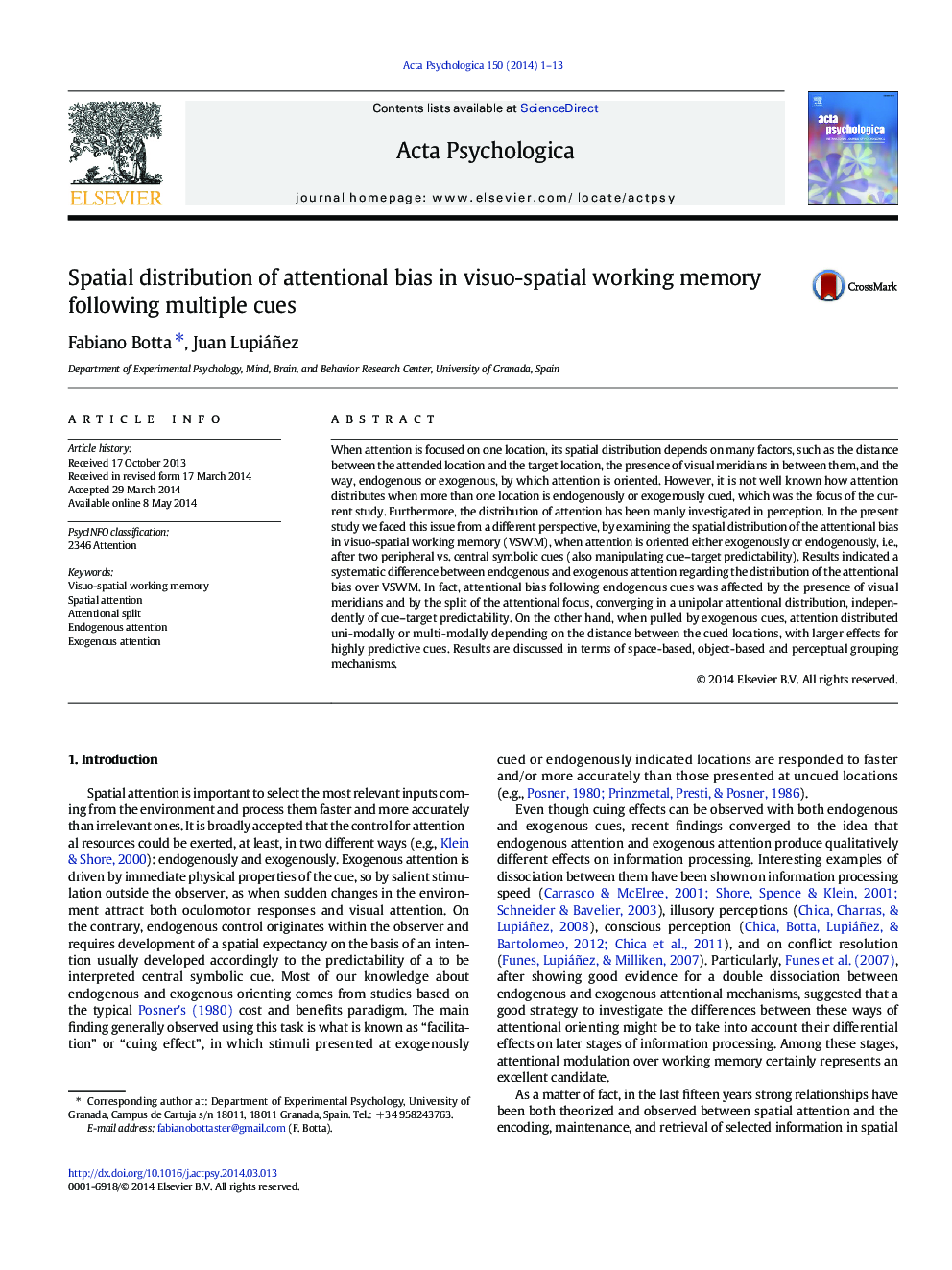| Article ID | Journal | Published Year | Pages | File Type |
|---|---|---|---|---|
| 919725 | Acta Psychologica | 2014 | 13 Pages |
•We studied spatial distribution of attention to multiple locations.•Endogenous and exogenous attention distribute differently.•Spatial distribution of endogenous attention is unimodal.•Spatial distribution of exogenous attention can be multimodal.
When attention is focused on one location, its spatial distribution depends on many factors, such as the distance between the attended location and the target location, the presence of visual meridians in between them, and the way, endogenous or exogenous, by which attention is oriented. However, it is not well known how attention distributes when more than one location is endogenously or exogenously cued, which was the focus of the current study. Furthermore, the distribution of attention has been manly investigated in perception. In the present study we faced this issue from a different perspective, by examining the spatial distribution of the attentional bias in visuo-spatial working memory (VSWM), when attention is oriented either exogenously or endogenously, i.e., after two peripheral vs. central symbolic cues (also manipulating cue–target predictability). Results indicated a systematic difference between endogenous and exogenous attention regarding the distribution of the attentional bias over VSWM. In fact, attentional bias following endogenous cues was affected by the presence of visual meridians and by the split of the attentional focus, converging in a unipolar attentional distribution, independently of cue–target predictability. On the other hand, when pulled by exogenous cues, attention distributed uni-modally or multi-modally depending on the distance between the cued locations, with larger effects for highly predictive cues. Results are discussed in terms of space-based, object-based and perceptual grouping mechanisms.
